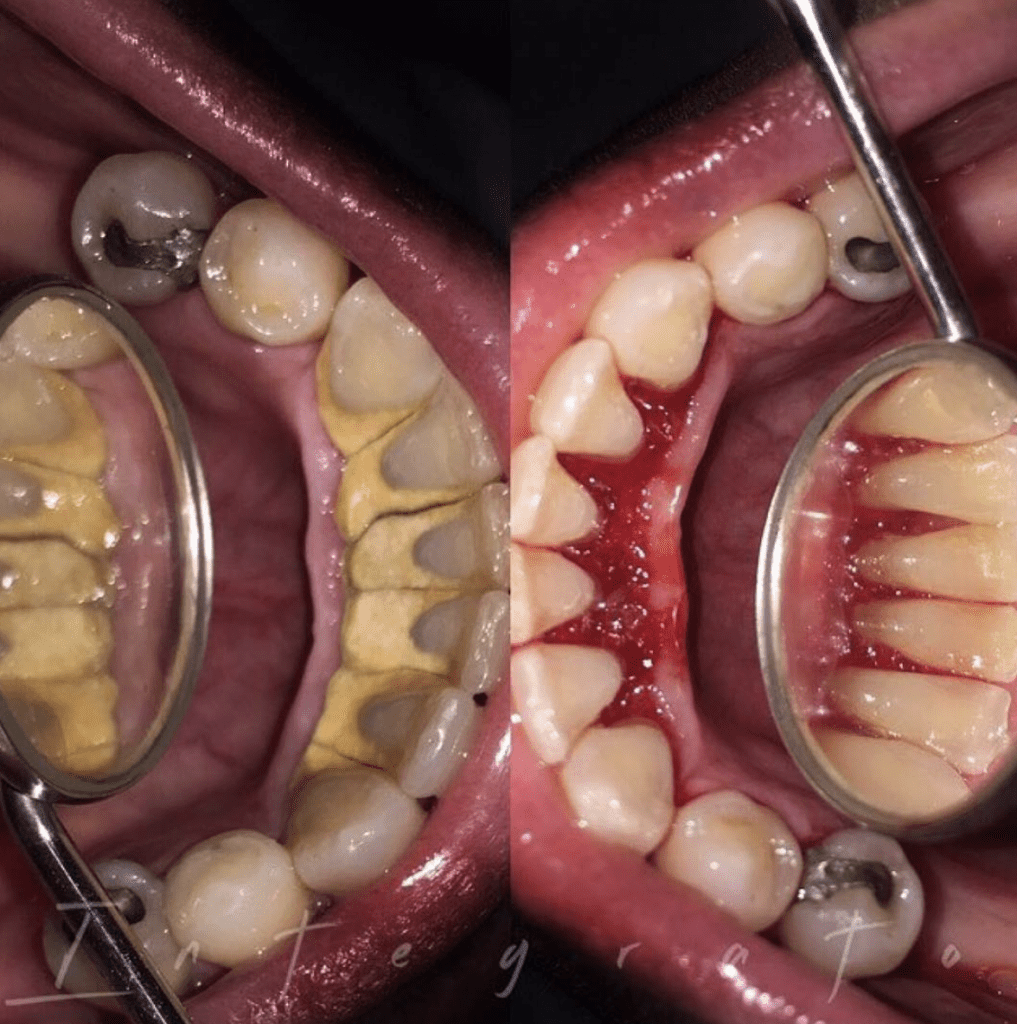

As you might imagine, preventing calculus buildup on teeth is an even bigger priority for smokers and drinkers of coffee, tea, and red wine. A porous substance, tartar absorbs stains easily. And not just because of the dental bills you might incur.
BUILDUP ON TEETH CALCULUS PROFESSIONAL
Other ways you can allow plaque buildup is not to brush correctly and not visit your dental professional regularly to remove plaque you missed. Not brushing your teeth twice daily to help scrub away the plaque buildup causes the biofilm to calcify, morphing into tartar.Plaque consumes sugars and starches of everything you put in your mouth – food, beverages, chewing gum, breath mints, pencil erasers – to produce acids leading to tooth decay.Bacteria in your mouth – and there are always bacteria in your mouth – stick to the smooth surfaces of your teeth and gums to form plaque (aka biofilm).Here's how your mouth's bacteria evolve into calculus: (Ah! Now the term makes sense, right?) Calculus Development Calculus results from plaque buildup that hardens – or calcifies (like bone) – on your teeth. In a nutshell, although the process of tartar removal may be a little painful, the discomfort vanishes within a few days.īook Appointment to find out which treatment might be best for you.Okay, let's move to the science classroom: As we noted, regarding dental health, calculus is more commonly known as tartar. Lastly, the dentist’s experience and the types of equipment used also ascertain the level of pain. More the tartar buildup, the greater is the pain, and vice-versa. Also, the extent of tartar with buildup on the teeth is fundamental in determining the level of pain you may experience. Overall oral health plays a big part in determining the amount of pain you will experience during any dental procedure. If you have sensitive teeth or diseases like gingivitis or periodontitis, removing tartar will be somewhat painful. The process of tartar removal may or may not be painful and is dependent on several factors. During the procedure, the dentist uses an ultrasonic device with a small nozzle to remove tartar from areas or spots that are hard to reach. As baking soda is mildly abrasive, it can help remove plaque more effectively, thereby prohibiting tartar formation.Īs mentioned earlier, tartar can only be removed by a professional. Furthermore, using toothpaste with baking soda also helps in controlling tartar buildup.In addition to the essential brushing and flossing, using tartar-control toothpaste may prevent this unwarranted gunk from buildup on our teeth.Thus, brushing daily and flossing are imperative to quell tartar. Research shows that plaque can harden into tartar within hours. The most crucial step in preventing tartar formation is to restrict the development of its precursor – plaque.But, we can take proactive steps to control the amount of plaque in our mouth and prevent tartar buildup. We must remember that you can only professionally remove tartar.It also fosters gum diseases like gingivitis and periodontitis. Tartar can give you foul breath, escalate bacteria buildup and destroy your enamel. Tartar absorbs stains quickly and can make your pearly whites look dull and discolored.

Another under-the-radar problem associated with tartar is the displeasing look it gives off. When tartar accumulates above the gum line, the adjacent tissue gets swollen and may bleed easily, leading to a condition known as gingivitis. Tartar on the teeth allows plaque to increase, resulting in cavities and gum diseases, and the vicious cycle of poor dental health continues. If plaque stays on your teeth and gumline for more extended periods, it hardens into tartar. But, we must remember that removing plaque is possible, and we can keep permanent tooth decay and gum diseases at bay.īut, at times, dental plaque aggravates to its more lethal form that is tartar. In addition, dental plaque is brimming with bacteria that may be destructive to the precious teeth enamel, thereby causing cavities.

This slimy layer blankets the teeth, gum line and can also stick to fillings, braces, and other dental work. The bacteria mix with the food remnants and other by-products to form a sticky biofilm or plaque layer. Despite regular brushing and flossing, bacteria buildup on our teeth is inevitable and entirely natural. But, let us discuss what plaque is first. Plaque that has solidified on the teeth is known as tartar or calculus.


 0 kommentar(er)
0 kommentar(er)
